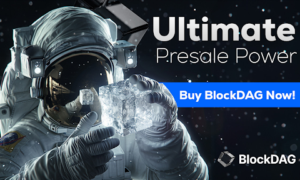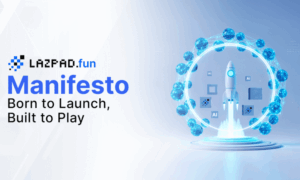The growth of the decentralized finance (DeFi) has been undeniable over the course of the last 18 odd months, as is best reflected by the fact that the total capital that has flown into this space over the above-said time period has increased from around $8.7 billion to a staggering $81.8 billion, representing a growth of more than 1000% — something that very few industries can boast of, that too within such a small window of time.
As a result of this expansion, this space has become flooded with a wide array of protocols that are designed to help crypto enthusiasts explore the fast-evolving realm of DeFi with the touch of a button. In that sense, one can think of Growth DeFi as being an all-in-one finance ecosystem that seeks to help users benefit from the positive effects of compound interest, high liquidity, arbitragers profit, all while mitigating the effects of ‘impermanent loss’ that most similar platforms suffer from.
What is MOR? Why Growth DeFi?
Straight of the bat, it should be highlighted that Growth DeFi currently issues and oversees the governance of a stablecoin called MOR, an offering that can be borrowed and minted using tokens that are already earning yield as collateral. To be a bit more specific, we can see that the stablecoin offers a lot of monetary potential for those investors seeking to hold a minimum collateralization ratio of 102%, thus enabling them to maximize their interest yield.
In addition to this, Growth DeFi also operates a yield optimizing platform called Wheat, which is one of the world’s first multi-layered yield optimizers that has been devised atop other such ecosystems such as PCS, Autofarm, amongst others. In this regard, MOR actually utilizes Wheat’s native crypto vault solution to hold any collateral. If that wasn’t enough, all incoming/outgoing funds are audited by ConsenSys Diligence, a leader within the crypto security space.
As a result of employing such a unique/future-ready setup, Growth DeFi affords MOR investors the ability to reap compounded rewards — ala Annual Percentage Yields (APY) — that are substantially higher in comparison to the interest rates offered by its contemporary yield optimizing platforms including Autofarm, Bunny, Beefy.
MOR over AAVE. Here’s Why
From the outside looking in, AAVE is basically an Ethereum-based ERC 20 token that investors can use to accrue rewards while participating in the ecosystem’s native financial activities — either in the capacity of a depositor or a borrower. On the other hand, MOR is designed to serve as an “overcollateralized synthetic stablecoin” whose design framework is extremely financially flexible as well as future-ready.
In fact, MOR is the only stablecoin in the market today that allows users to earn sizable passive income streams on their holdings even if they are simply serving in the capacity of a borrowing agent within the ecosystem. To put it another way, investors can employ their existing yield-earning tokens as collateral to buy even more coins of a similar nature (i.e. yield-earning offerings).
In addition to this, MOR offers an extremely low fixed fee rate, which essentially means that when a user withdraws their collateral, they can calculate the exact amount they are due to receive. This setup is in direct opposition to many other prominent protocols (including prominent ones such as AAVE, Alpaca, and Rabbit) that feature a variable fee structure, leaving these platforms susceptible to whale manipulation.
Lastly, when compared with AAVE, MOR offers certain other tangible benefits like allowing investors to leverage their yield as well as non-yield earning positions, potentially opening the doorway to a number of completely unique monetary possibilities.
The future is here thanks to MOR
In addition to all of the benefits outlined above, MOR is also an extremely viable asset for inventors with a lower risk appetite, since it allows users — who may be looking to simply hold on to their stablecoin investments — to transform a standard sub 10% yield into one that is higher by a factor of up to 50x in some cases
Last but not least, MORs native revenue infrastructure is designed in such a way that it supports buybacks as well as comes replete with an inbuilt burn mechanism, allowing for a high level of financial/operational safety.



































